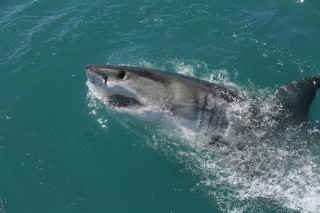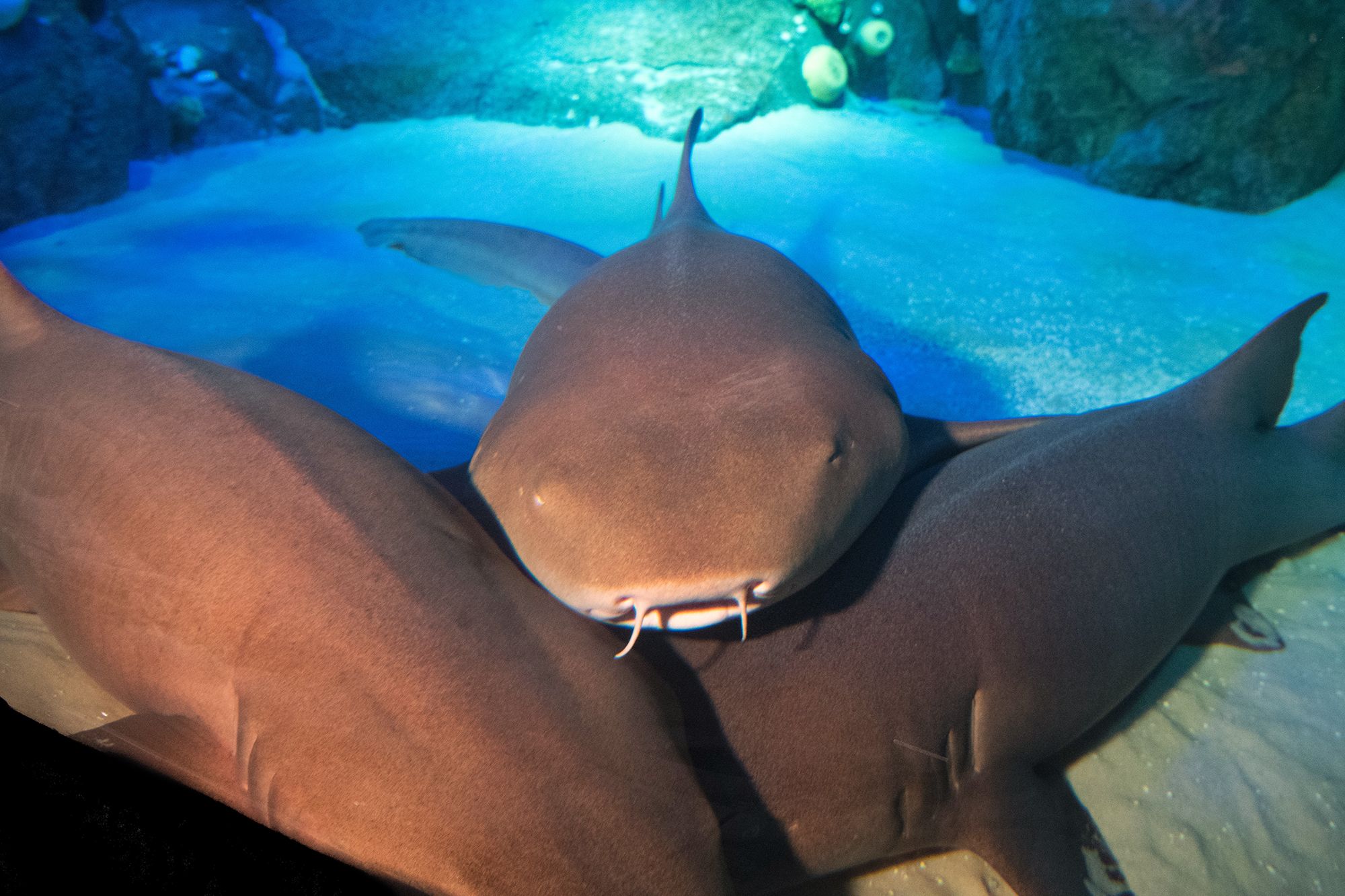
June 19, 2022
Sharks: A Repertoire of Fascinating Behaviors
- as seen by -
 Marcus Parker
Marcus Parker
As a shark keeper at the Wildlife Conservation Society’s New York Aquarium, I am frequently asked: What are sharks truly like? Most people expect them to be mindless eating machines, but I often find myself coming to their defense, insisting on their multitudes. They have a vast repertoire of fascinating behaviors which are more complex and intricate than most people realize. Despite the age-old adage, you are what you eat, I believe sharks are much more. In fact, certain species of sharks, like sand tiger sharks, stop eating entirely for months on end. It is a natural process that happens both in the wild and here at the Aquarium. If a shark was only the food that it ate, what would become of the sand tiger shark during its seasonal inappetence?
There are plenty of other ways to spend one’s time besides eating. Sharks here at the Aquarium might interact with objects in their environment, participate in a training session with a keeper like myself, rest in a favorite nook, or interact with each other. On occasion, we even observe our sharks engaging in mating behavior – something not often depicted in the fear-mongering shark movies of Hollywood. Witnessing a mating event in the wild is incredibly rare; mating largely happens out of sight. Here at the Aquarium, however, we have more opportunities to observe their behavior, supplementing the knowledge gained by the field research community.
Mating behavior can be seasonal, as in the case of sand tiger sharks (just like their eating preferences). It can be never-ending, as in the case of white-spotted bamboo sharks (the rabbits of the sea). Sometimes the science related to mating behavior is yet to be discovered and understood, as in the case of the whale shark, the largest fish in the ocean. There is one species, though, where mating behavior has been well documented.
For over twenty years, scientists in the Dry Tortugas National Park near Key West, Florida have studied the mating behavior of nurse sharks (Ginglymostoma cirratum). Their studies have deepened our understanding of nurse sharks, and shark reproductive behavior in general, but unknowns still remain. Here at the Aquarium, we currently house three nurse sharks in our Canyons Edge pool inside the Ocean Wonders: Sharks! exhibit: Starla, a female, Ginger, a male, and Guac, another male. I admire all of them but privately have a soft spot for one in particular. Guac, named for the avocado-based side dish, has been observed engaging in behavior not seen in Dry Tortugas, often aligning with the spirit of Pride Month. He has been seen approaching our other male, Ginger, and attempting to engage in mating behavior with him. Guac seems uninterested when our female solicits him in the same way.
There may be a variety of reasons for Guac to do this. It may simply be a dominance behavior related to their social hierarchy if that exists. It may be a younger individual practicing a behavior that will be utilized later in life. It may be a combination of multiple factors or none of the above. While it is unwise to draw conclusions based on casual observations, Guac’s apparent preference is a reminder of how much more there is to learn about wild animals in wild places. Guac could be the gateway to an unexplored facet of these amazing creatures. In the meantime, he’ll be quietly swimming in Coney Island.
EDITOR’S NOTE: To celebrate Pride Month, Wild View is featuring posts by LGBTQ+ individuals or about the LGBTQ+ community and their contributions to science and conservation.
Nikon D5




Leave a Comment